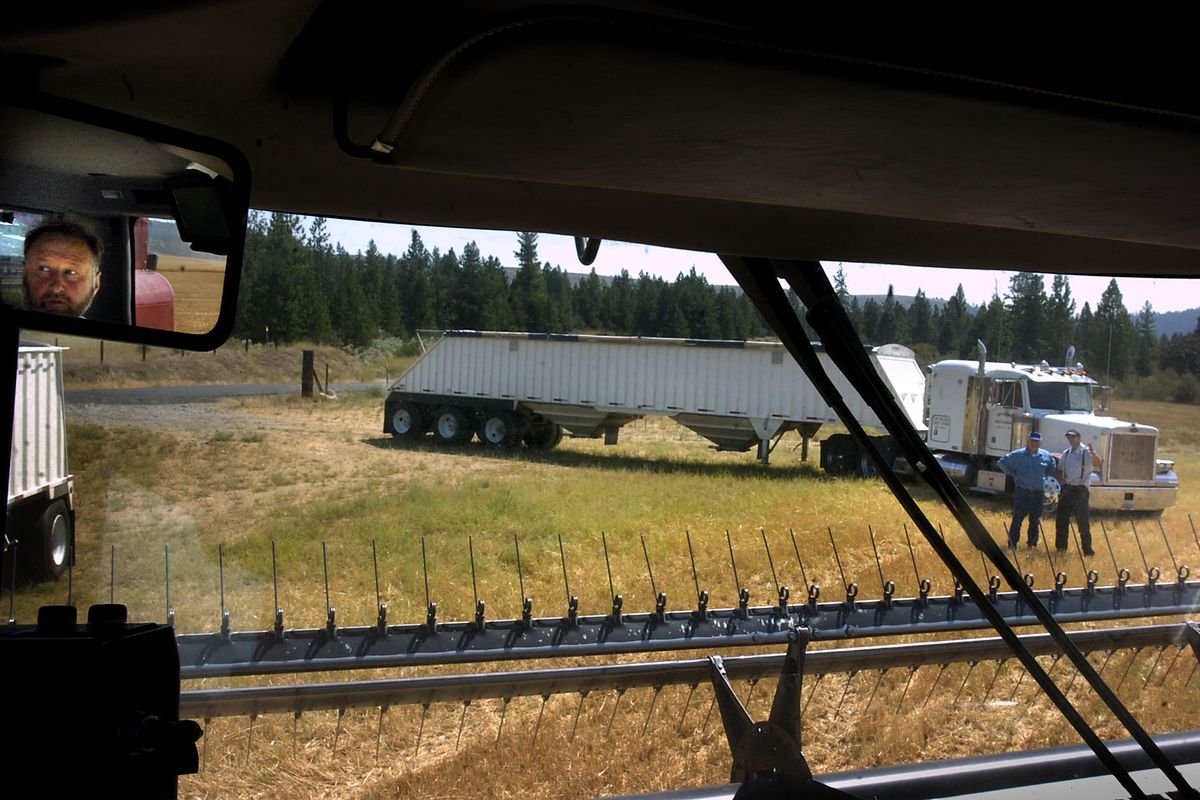Manure control ordered by state
Runoff at Hutterians’ feedlot just latest environmental flap

State officials moved this week to keep the Spokane Hutterian Brethren from allowing cow manure to wash into a Deep Creek tributary.
A Department of Ecology order, delivered Tuesday, directs the farming commune near Reardan to obtain a “concentrated animal feeding operation” permit for its feedlot. Officials said they issued the order because the Hutterian Brethren failed to comply with an official warning last May.
General Manager William Gross said the local Hutterian group hasn’t decided whether to appeal the order.
“We really haven’t discussed that here yet with everybody that’s involved,” he said.
The order is the latest in a series of regulatory issues regarding the religious group’s environmental practices. The commune also has gotten attention from the state Department of Fish and Wildlife, the Spokane Regional Clean Air Agency and the Army Corps of Engineers.
Among other issues, the Hutterian Brethren were taken to task for unpermitted water use and an unauthorized 30-foot-tall earthen dam that state officials said threatened six to eight downstream homes.
The dam and the threatened homes are in Spokane County, on North Wood Road, seven miles northwest of Airway Heights.
“We had worked on that all for some time, and we just needed to comply with whatever the county or the state required,” Gross said. “It’s probably not 100 percent over yet, but we tried to comply with what the regulations require.”
Ecology officials said animal-waste runoff entered the reservoir created by the dam. The infiltration was detected in February 2009 when state Ecology and Agriculture Department workers visited the site and noticed an odor from the reservoir water.
State officials said cattle waste got into the reservoir when a nearby holding pond overflowed.
Under the feedlot permit the Hutterians have been ordered to obtain, manure and other waste must be kept out of the creek except during an exceptional storm.
Gross said he understood a permit is required only for feeding operations of a certain size. But Ecology compliance specialist Michael Hepp said a permit was required because the Hutterian feedlot is “a significant contributor of pollutants to waters of the state.”
While investigating the feedlot, Ecology officials determined that the colony’s groundwater use probably exceeded a 5,000-gallon daily limit.
That problem was resolved last month when the department approved a water-right transfer from a nearby well.
The unauthorized dam remains an issue, but its threat to downstream residents was eliminated when the Hutterians complied with an order to keep the water level 16 feet below the top of the dam.
State law allows creeks to be dammed without a reservoir permit, but only if the dam is no more than 10 feet tall and impounds no more than 10 acre-feet of water. The Hutterian reservoir can hold an estimated 40 to 50 acre-feet.
Gross said the Hutterians intended to stay under the regulatory threshold when the dam was built in 2006, “but then after we were done, it held more water than what we all had figured.”
The commune complied with the January 2008 Ecology order to draw down the reservoir and hire an engineer to develop plans to bring the dam into compliance.
Ecology spokeswoman Jani Gilbert said the agency doesn’t regard the reservoir draw-down as a permanent fix. Officials are waiting for the engineering report, she said.
The Hutterian Brethren, or Hutterites, are a group of Christians that traces its origin to the 16th century Anabaptists of central Europe.